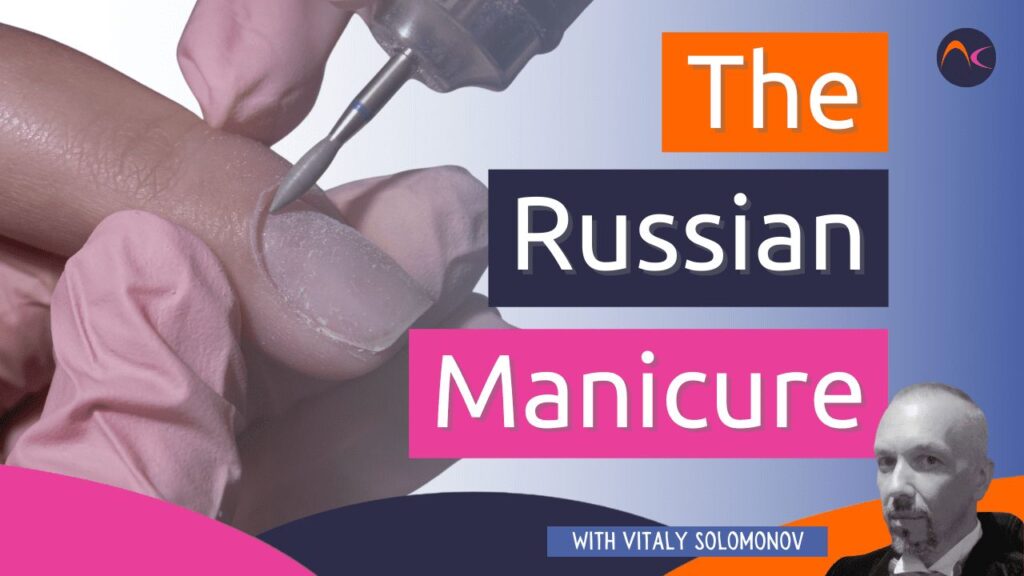The Russian Manicure: Balancing Beauty and Risk in Nail Cosmetology
In the world of nail cosmetology, achieving both beauty and health is a delicate art. The Russian manicure, a popular technique known for its gentle approach, has garnered attention for its ability to deliver aesthetically beautiful and healthy results simultaneously. However, beneath the flawless exterior, the use of harsh abrasives in this procedure can lead to hidden micro-injuries on the skin. It is crucial for professionals to understand the concept of controlled inflammation in cosmetology and recognize the fine line between beneficial and harmful practices. This article delves into the significance of comprehending inflammation in the context of the Russian manicure technique and highlights the potential risks it entails.
Understanding Inflammation in Cosmetology
In the pursuit of flawless beauty, imperfections are often overlooked. In the case of the Russian manicure, signs of redness, irritation, and swelling may be dismissed as mere imperfections. However, these signs are actually symptoms of inflammation, which plays a dual role in our well-being. On one hand, inflammation acts as a protective and regenerative tool for our skin, while on the other hand, it can lead to unhealthy conditions and diseases if not properly controlled.
The Role of Controlled Inflammation in the Russian Manicure
The Russian manicure, renowned for its gentle approach, relies on the concept of controlled inflammation to achieve its remarkable results. Professionals must understand the delicate balance between beneficial and detrimental inflammation to ensure safety and efficacy. While physical training is essential, theoretical education is equally vital, as it provides a comprehensive understanding of the intricacies of inflammation in cosmetology.
Exploring Abrasion Techniques
One of the key aspects of the Russian manicure is the use of scrubs, peels, and abrasion to achieve the desired outcomes. Among these, scrubs stand out as a mild form of abrasion, effectively awakening deep living cells in the skin and promoting regeneration of new, fresh skin layers. This process triggers a series of biological reactions, vital for re-covering the skin’s barriers and restoring its health. Essentially, when we refer to “skin rejuvenation,” it is, in fact, synonymous with skin inflammation, as the skin’s ability to regenerate is closely tied to controlled inflammation.
The Dangers of Deep Peelings
While mild abrasion methods such as scrubs and nail polishing have their benefits, deep peelings require special medical education to understand the skin’s responses from the initial stage of inflammation to full healing and recovery. Peelings are often associated with chemical action, but regardless of the damaging agent—be it chemical, mechanical, or infectious—the skin responds with inflammation. Understanding how to control severe inflammation during harsh abrasion procedures is crucial to achieving positive results without risking adverse effects or turning inflammation into disease.
The Cumulative Effect of Inflammation
An essential aspect to consider is the cumulative impact of repeated mild inflammations. When the skin is unable to recover between procedures, the cycles of inflammation overlap, leading to chronic injury. The skin’s renewal cycle, which is approximately 30 days, becomes disrupted, resulting in signs of abnormality such as extreme dryness, slow nail growth, thin and fragile nail plates, and changes in shape. In severe cases, conditions like onycholysis, onychomadesis, or pterygium may arise, involving the nail matrix in the process.
Induced Problems and Inflammatory Reactions
Improper procedures, particularly those involving deep abrasion, can induce a chain reaction of inflammatory responses. This interconnected cycle may lead to additional problems, including infections, allergies, and burns, further highlighting the significance of understanding the limits and risks in cosmetological practices.
Professional Responsibility in Cosmetology
This article does not seek to demonize any specific technique; rather, it aims to shed light on the hidden dangers that arise when professionals fail to recognize the limits of their responsibility. Efiles, while powerful and indispensable in various professional fields, require skill and understanding to ensure safe and effective practices. As with any cosmetic procedure, the Russian manicure demands expertise, knowledge of inflammation, and an unwavering commitment to professional responsibility.
Conclusion
In conclusion, the Russian manicure’s gentle approach to nail cosmetology is an admirable technique, but it necessitates an in-depth understanding of controlled inflammation. Through theoretical education and careful consideration of the potential risks, professionals can deliver aesthetically beautiful and healthy results while safeguarding their clients’ well-being. Remember, the beauty lies not only in the outcome but also in the responsible practices that underpin it.
FAQs:
1. What is the Russian manicure, and how is it different from traditional manicures?
– The Russian manicure is a gentle nail cosmetology technique that utilizes controlled inflammation. It differs from traditional manicures by using specialized tools and mild abrasion to achieve healthier and aesthetically beautiful results.
2. Is controlled inflammation beneficial for our skin during the Russian manicure?
– Yes, controlled inflammation in the Russian manicure triggers regenerative processes in the skin, promoting skin health and rejuvenation.
3. What are the potential risks associated with deep peelings in nail cosmetology?
– Deep peelings in nail cosmetology can lead to severe inflammation and require specialized knowledge to avoid adverse effects.
4. How does repeated mild inflammation impact the skin’s renewal cycle?
– Repeated mild inflammation can disrupt the skin’s renewal cycle, leading to chronic injury and signs of abnormality, such as slow nail growth and thin nail plates.
5. What are the signs of abnormality in the skin and nails due to chronic inflammation?
– Signs of abnormality due to chronic inflammation include extreme dryness, changes in nail shape, and conditions like onycholysis or pterygium involving the nail matrix.


